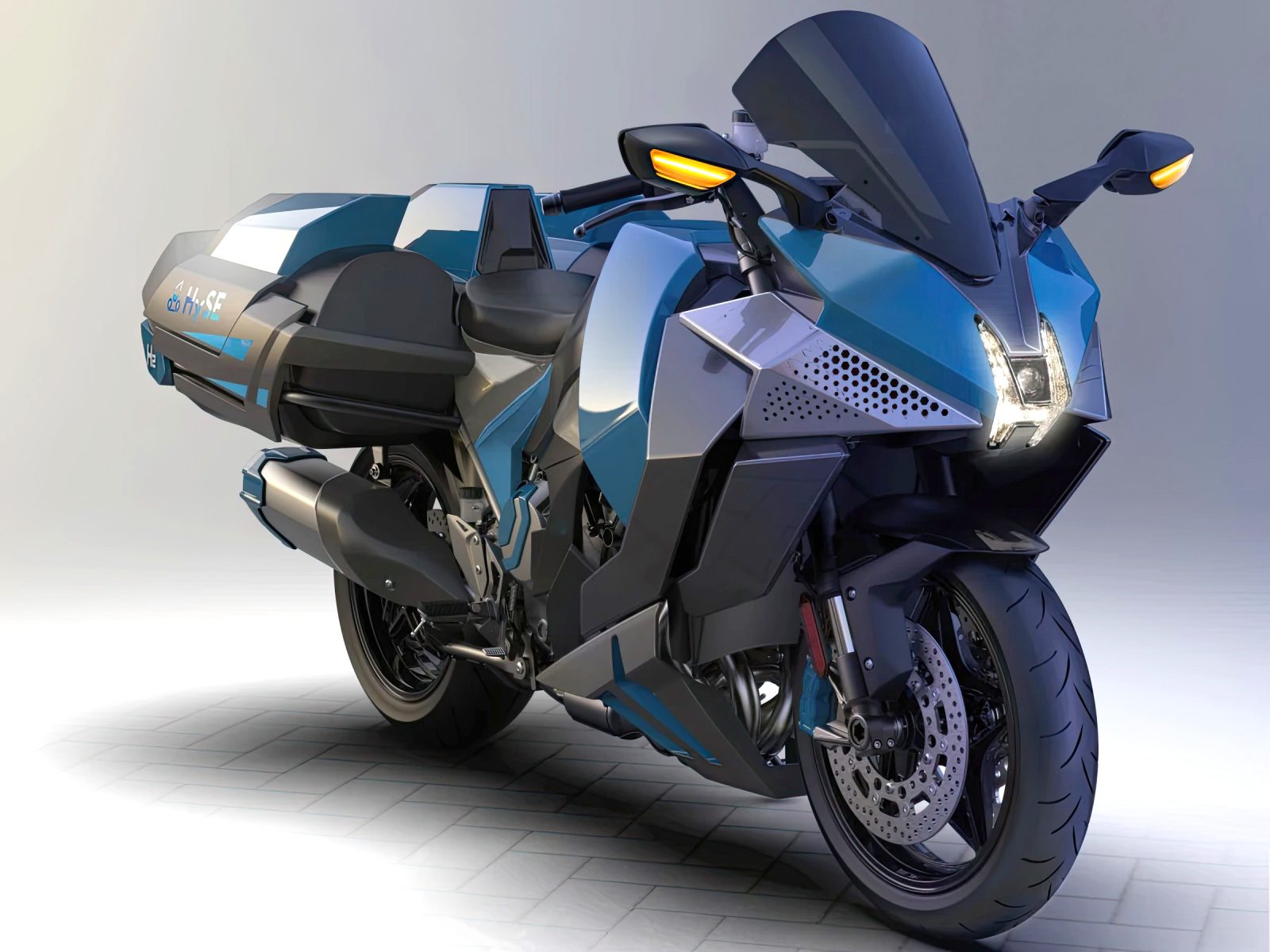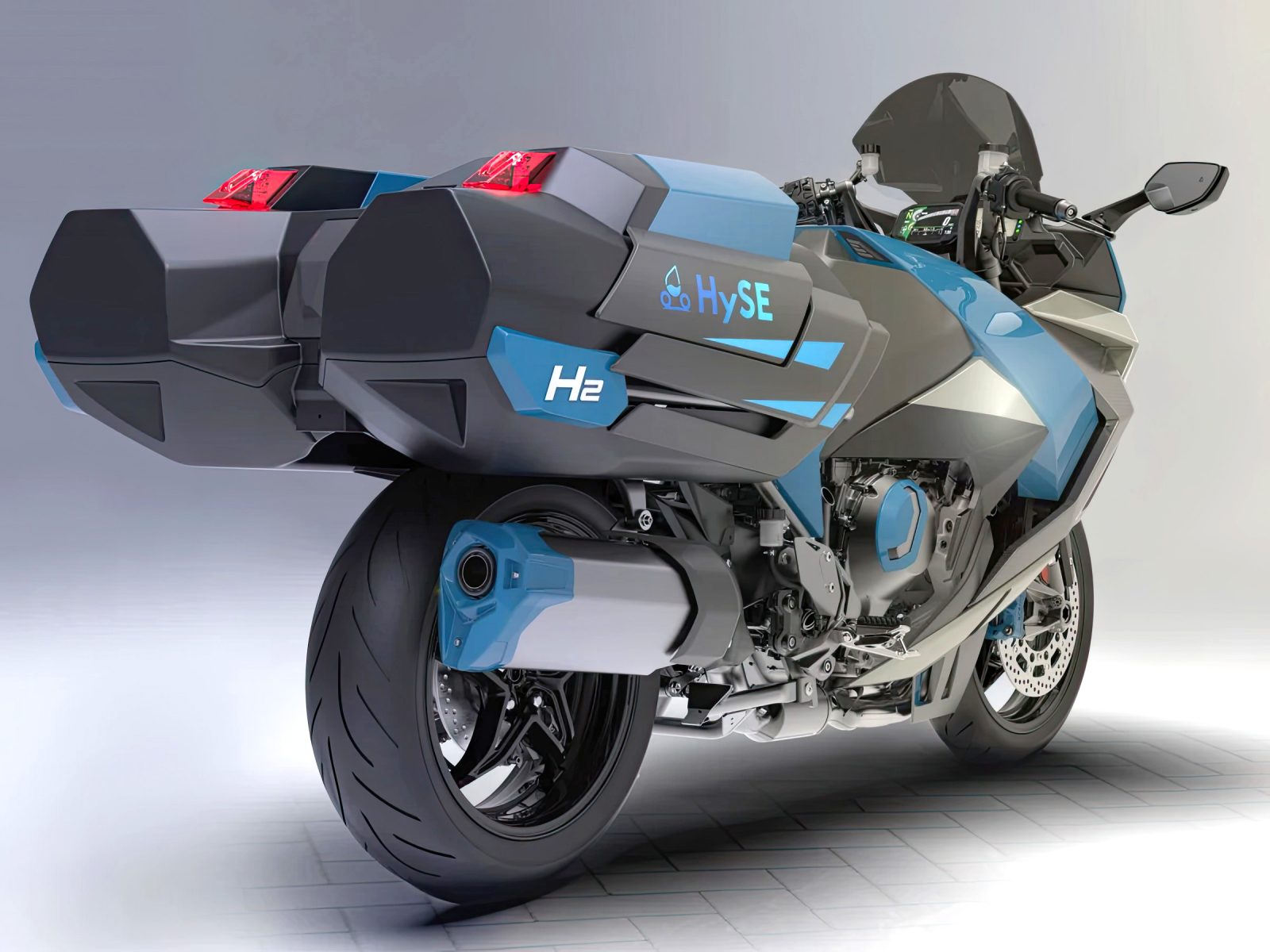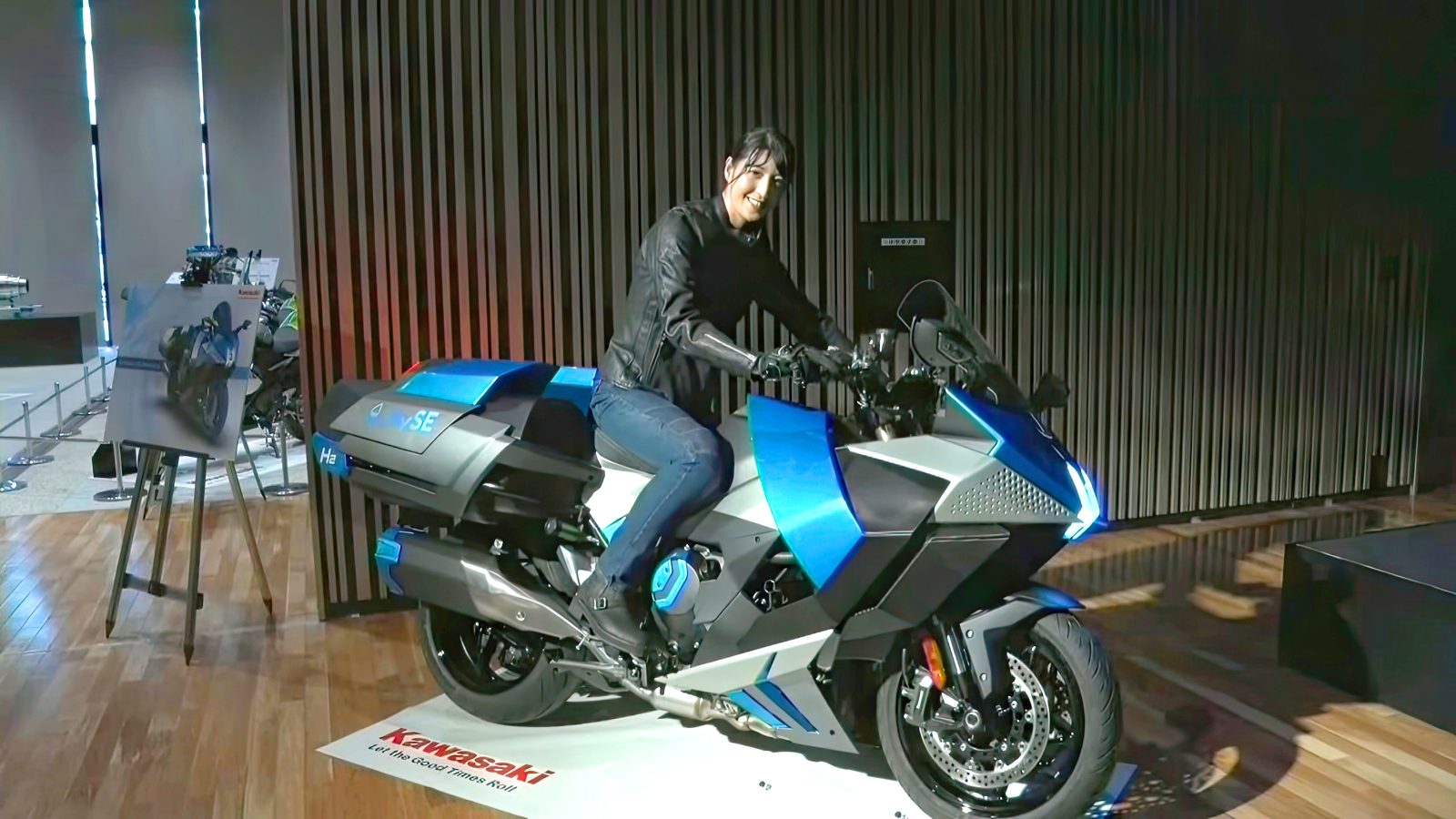Mock-up of upcoming Kawasaki hydrogen H2 prototype revealed in Japan.
For the last couple of years Kawasaki has shown drawings of a proposed hydrogen-powered sports bike as part of its plans to reach net-zero but, at the company’s latest Group Vision 2030 Progress Report Meeting, a real machine was wheeled out for the first time.
Based on the H2 SX, the hydrogen-driven prototype uses the same supercharged 998cc four-cylinder engine, modified substantially to burn hydrogen rather than gasoline. The required changes include the adoption of direct fuel injection – adding the hydrogen to the combustion chamber after the compressed air from the supercharger has been forced in. That’s vital, as hydrogen takes up a huge amount of space and its stochiometric ratio – the amount of air needed to make it burn properly – is much higher than petrol’s (petrol’s air-to-fuel ratio is 14.7:1, hydrogen’s is 34:1).

Kawasaki has become a key member of the HySE (Hydrogen Small Engine) project in Japan, which also includes Honda, Yamaha, Suzuki and Toyota, and its supercharged engine is an important part of the project. The engine will be tested in the heat of competition this month, fitted to the HySE-X1 side-by-side four-wheeler, and tests of the hydrogen-powered motorcycle seen here are expected to commence later in the year.
Although it’s been shown, that doesn’t mean a production version is just around the corner. Not only is there no viable hydrogen refuelling network away from tiny pilot projects, but the bike is built around a system of replaceable hydrogen canisters. Kawasaki’s prototype illustrates one of the problems associated with the fuel – its sheer bulk. While hydrogen is incredibly light, even when compressed or chilled to liquid form, it takes up a lot of space. The panniers aren’t for luggage, instead they’re filled with banks of canisters containing hydrogen stored at extremely high pressure. The result is a single-seat bike the size of a large tourer but without the space.

On the plus side, the technology results in an internal combustion engine that emits little more than water, potentially extending the life of internal combustion technology. It also means you can avoid the weight and long recharging times associated with batteries for electric bikes.

WORDS BEN PURVIS